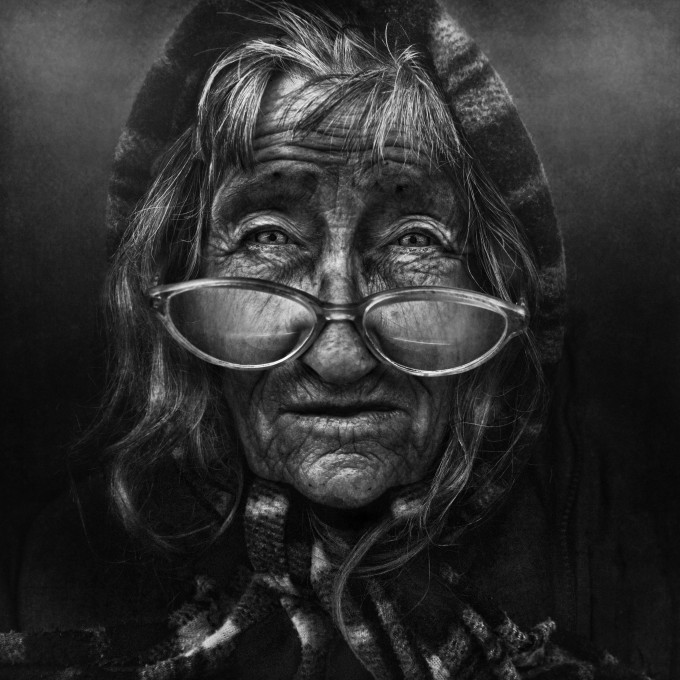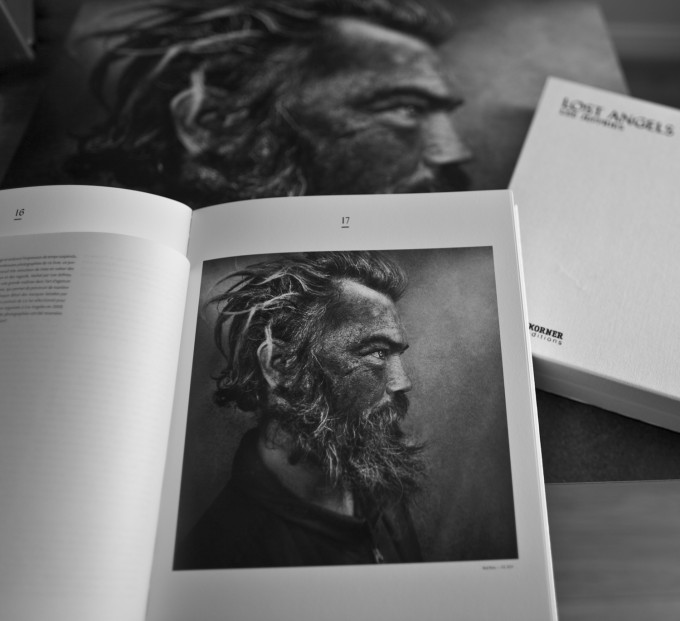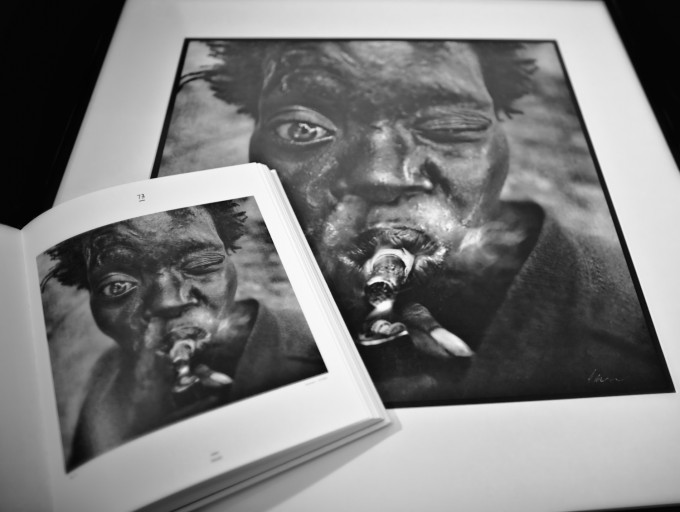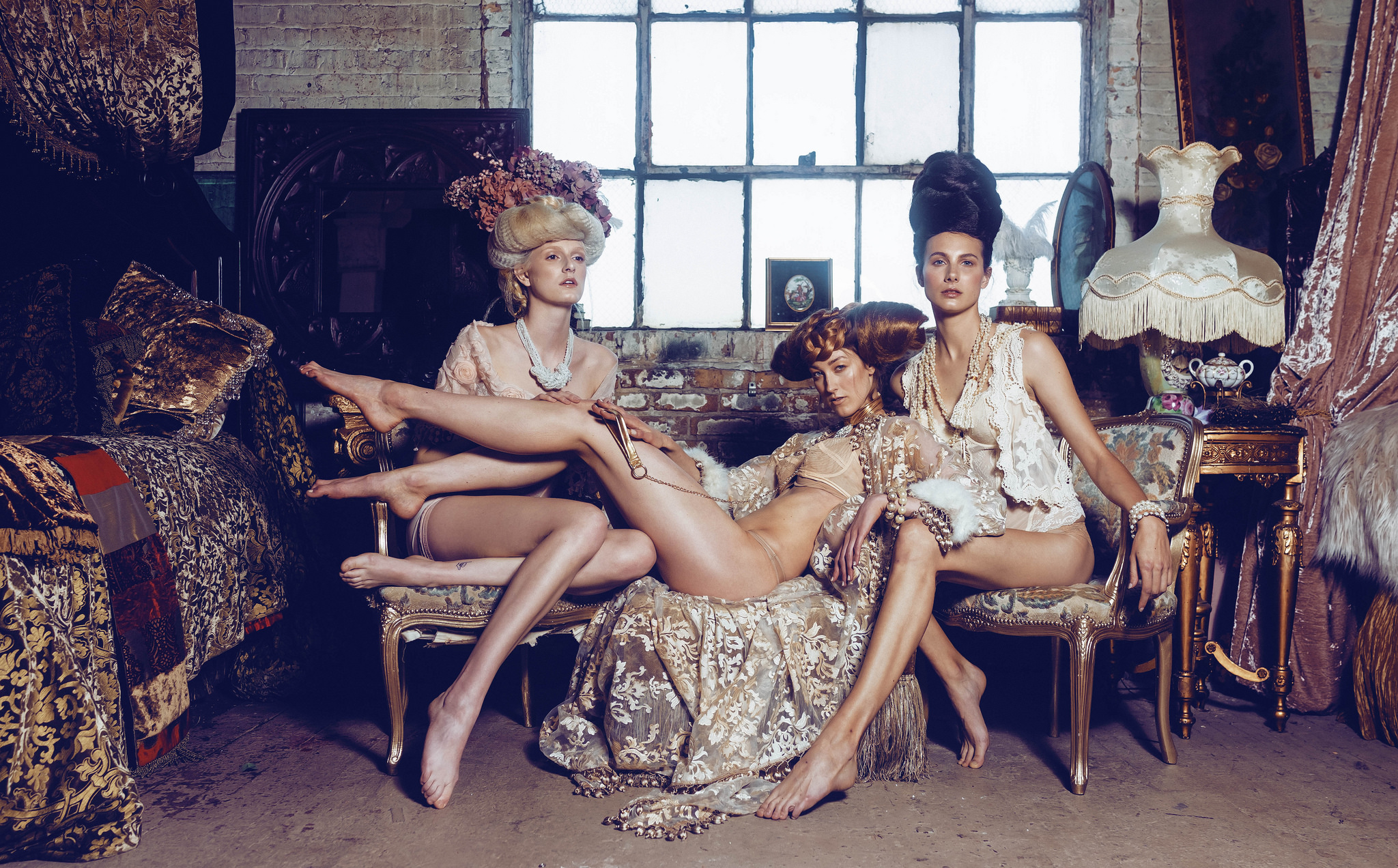Lost Angels
By Lee Jeffries
I guess “Lost Angels was a “process” that started for me five years ago. I was in London to run the marathon and found myself wandering the streets with my camera the day before the race. I trained my long lens on a young homeless girl huddled in a sleeping bag from across the street. She noticed and began to shout at me in an objective manner. I was obviously very embarrassed and at the time two thoughts went through my head. Turn away and get out of the situation quickly. Or go over and talk to her. I chose the latter. Doing so changed my perception of how I wanted to approach photography. The photographs became of secondary importance. Making contact, stopping to chat and helping out where I could become much more significant. Loneliness goes hand in hand with homelessness and alleviating that for 20 minutes..or an hour…or sometimes for a few days then it’s that reaction, nearly always positive, that I take away from an encounter. The intimacy of my portraits are perhaps a testament to this.

My images have become more like art. For that reason I never dilute them with “document” or “circumstance” unless it’s absolutely warranted. I try very hard to capture both an emotional element and supplement that with a metaphysical quality that grabs and holds the attention of the viewer. I like to allow all of that emotion to breathe inside the mind of those that “see” and allow them to make their own conclusions on the “reality” of the situation. There is enough packed into any one of my images to take the viewer on a journey. They are an exploration of humanity. It’s as much an exercise in self-examination as it is in photography. They carry a social message, a message of injustice and suffering. They are about faith. Love. Compassion.
Cheers
Lee
You can check out Lee’s book “Lost Angels” at the link HERE. His 500px is HERE.






“Turn away and get out of the situation quickly. Or go over and talk to her. I chose the latter. Doing so changed my perception of how I wanted to approach photography.” What an awesome epiphany and the results prove it.
given his choice of subject matter, to me this body of work has always seemed regrettably “over processed” …… “sensationalized” in a manner that would perhaps better suit an advertising campaign for high end athletic shoes but in the context of making a statement about the “homeless” i find it bordering on distasteful .. . . imagine hiring the art director of Sin City and letting them have their way with an important documentary . .. . i feel like in this case the “humanity” of the subject is undermined by “special effects” which imo draw more attention to themselves than the people they are intended to be in service of . . . i’d like to believe that his heart is in the right place but i think his “eye” is terribly misguided . . . ..
I really appreciate this collection. When I saw the examples posted here I knew right away the comment section would be split. These are not traditional B&W photos and some people do not like homeless photos in general. I think the post processing here is extreme but it was obviously intentional and it has a common style so it comes off as having a purpose and not just done to compensate a lack of photographic quality.
My favorite two were the girl in the sweater and the man wearing the suit, both of which are untitled.
Nice write up and ideas, but I understand the processing is intentional, but it is horrible, makes the people look inhuman and troll-like – like extras from LotR. I honestly think these pictures take the mick out of the people you’re portraying and is insulting and disgraceful – Lambast me all you want, this is my opinion.
Your last 2 words tells it all: Love. Compassion!
Now, I don’t know Jeffries work, bit these look like some of Don McCullin’s work of homeless people, I’m not for one moment comparing the two, for me these photos look very stylised and composed, almost like a fashion shoot, and why not? Why should money, status, clothes dictate a persons right to be portrayed in the same way as those in glossy pages? Is it this that makes people feel uncomfortable? As if they are being exploited, used for financial gain? maybe they are, just like real models… Maybe Jeffries will donate to homeless charities, I don’t know, still, if he finds an interest in people who happen to be homeless,then so what, I’ve met and stayed with some ex homeless people in a “half-way house” and they opened my then, young eyes to the fact that they are still people, and will probably have a far more interesting story to tell than the rest of us, yet they are ignored, walked round as if invisible, looked down upon as 2nd class citizens, at least he is “seeing” them, humanising them, not demonising them as much of society does.
If it makes you uncomfortable, then maybe that’s your own and society’s conscience that is being pricked?
That he documents them in a stylised fashion, and not “documentary” style isn’t really the point, that he is doing so, and bringing it to our attention is, it’s all so very easy to criticise and get up on a soap box these days and be the one to point the finger at someone……
I prefer your well considered analysis of the work rather than the photographers over confident self congratulating spiel.
Nik.C they look NOTHING like Don’s picture’s of homeless which were taken in the 60ies in London. Don’s work is moving and real – this work is bollocks, caricatures, gargoyles, horrid and angers me.
Love these pictures! I was baffled to see comments on PP. You either like the photos or not, they are great as far as I am concerned. I found your story very interesting and the faces reinforce this feeling. Don’t worry about what the technical readers write, but I am sure you don’t 🙂
At the outset, I would say that these photos are stunning.
I shoot street photography when I am able, but when it comes to impoverished folk, I make it a practice (out of respect for their downtrodden state) NOT to take their photos. They are an intriguing target, and there is a certain shock value that comes from this type of subject matter…a shock value that makes for an interesting photo, for sure. Not knowing where the $205 that you’re charging for this book is going, I would hope that ALL the profits go to helping the homeless in your community. Anything less than that is exploitation. I hate to be harsh, but that’s the way I feel about this type of subject matter.
I agree completely with you Dave. The homeless are an easy target. Take photo of disadvantaged person. Apply Nik Silver FX Low Key 2 effect. Write self congratulatory prose with back story of connecting with them.
Look more closely at these images. Browse through the book from the link. He does not humanize them, as if they need that. The processing has turned them into gargoyles. Monsters not people.
I think your work and even more so your commitment to these projects and amazing and awe inspiring!
I dont really like these at all. Have seen them elsewhere in the past and just find them to be all form over any real content. Too much sugar.
I’m startled to see this work presented as social documentary when the overly post-processed technique turns these portraits into caricature. Some images even look cartoonish. The real shame is that Jefferies has collected an amazing set of homeless faces, and photographed them wonderfully. In the end however I think this heavy-handed processing approach shows great disrespect to social documentary in general, and to the people portrayed in particular.
The book may sell well due to the “something new” approach of the processing; I suspect it will get little traction from discerning photo-book collectors. Too much sizzle.
I certainly agree with your opinion. He’s definitely very talented with an extremely high opinion of both himself and what he calls his art. I much prefer the photography of the old masters. It’s too bad he chooses to over process his photos in this way.
firststream, I agree. The people have become objects. And there’s no real context or purpose aside from the author’s own indulgence in himself by using these individuals, despite his ‘pleas of humanity.’ They have become fetishized as ‘art’ objects in a self published book . It’s not art and it’s not social documentary. As a grad student (MFA in photography and later on MJ in Journalism) this was a big issue that we all had to understand, and to realize the consequences when we are dealing with subject matter such as this. It’s somewhat the same type of issue that Salgado ran into, too (images of working people end up as expensive gallery objects on the wall for the wealthy to purchase as investments.) There are plenty of constructive ways to address social issues but unfortunately this is not one of them. And there are many serious photographers who understand all the implications and contradictions (e.g., Jim Goldberg’s work.) This is a problem when individuals become ‘street photographers’ without spending time to study what preceded them, to contemplate the intellectual and cultural ramifications, and to form a specific context for their own work.
photography is a form of art and your pp makes those images art for me. it accentuates the strong character of faces you took pictures of. exceptional collection. thanks for sharing.
Amazing body of work. Stunning images. I too am a bit preoccupied by your technique, it really grabs the attention. I personally do not feel drawn to explore the underlying emotion about the plight of your subjects anymore than many documentary photographs, specifically highlighting homelessness. Many photographers have explored this idea and I feel for example the “Eli” series on Steves site a little while ago touched me more because of the in depth look at one mans character despite his suffering. The lack of post production there did not detracted from the message. These one off stark portraits almost become glorified bronze statues, lit like a Caravaggio painting.
Masterful work non the less. Among the finest portraits I have seen in years. A well realised project, with fascinating results.
Your portraits are BRILLIANT ! Fantastic ! Many thanks for sharing !
Jeffries is amazing. Outstanding work, congrats!
I find your work quite interesting. It is beyond saying that in photography, going into other people’s lives demands to share something of your own.
Dimitris V. Georgopoulos
Photographer at Large
Athens, Greece
Brilliant images of a forgotten society. And something that strikes at the heart, particularly at this time of year.
“There by the grace of god…”
I very much agree. They were hard to look at, but needed to be seen.
Lee, I first saw your work about a year ago, I think, and my first reaction was that your images appeared too processed for my taste. Today, I’m less inclined to judge work on its technical qualities in favor of what the image conveys to me artistically. Without question, you have amassed a portfolio of extraordinarily powerful images. Your approach to post processing is decidedly unconventional, but on the whole I not only think it works but that you’ve managed to expand the creative boundaries of the medium. That’s no small feat. I congratulate you for a remarkable body of work.
Human kindness is the most important tool in the street photographer’s kit.
from these photos one would assume post process is most important tool…
but it isn’t